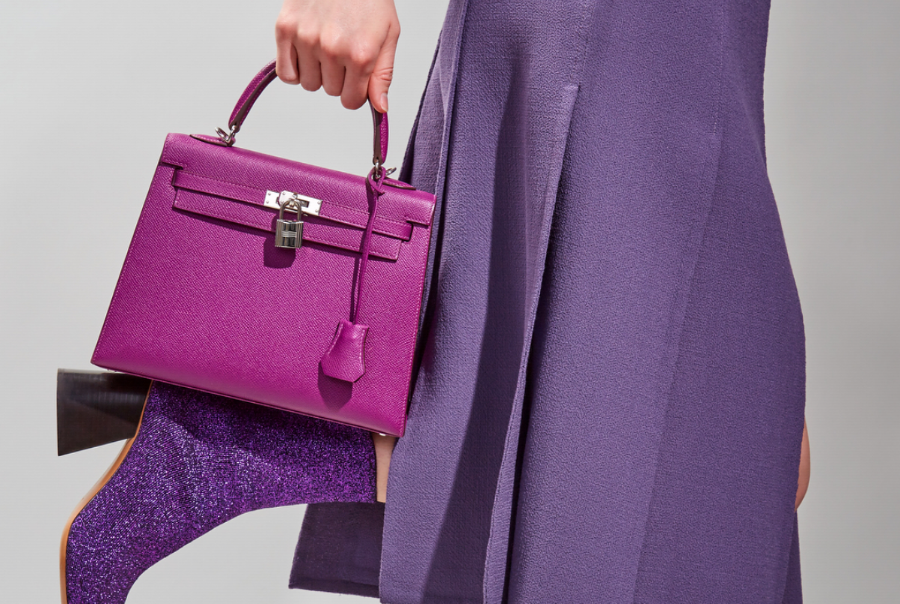
image: The RealReal
“Luxury cars, perfume, handbags, wine, spirits, and cheese are on a list drawn up by the White House of items that the U.S. could target for tariffs,” the New York Times reported late last week, citing an outside advisor to Donald Trump with knowledge of plans to implement duties on products coming not just from China, which is in the midst of a trade war with the U.S. – but also those coming from France, Belgium, and Italy.
Writing for the Times, journalist/lawyer James B. Stewart stated, “To some trade warriors, luxury goods are especially appealing targets because there are readily available American-made substitutes, and affluent consumers can afford the higher prices” that will be handed off to them as a result of tariffs. Yes, there is practical appeal to levying duties on non-essential products, such as Louis Vuitton bags and Chanel fragrances: “It hurts exporting countries but not cost-conscious consumers, who presumably aren’t buying many of [these products].”
However, American consumers may be less than enthusiastic about the possibility of such tariffs, a sentiment that has been expressed, of course, by non-native brands, many of which argue that such tariffs would not only hurt their bottom lines but would have a negative impact on Americans, as well. This is in line with the argument that many wealthy consumers are not immune to considerations about pre-tax vs. post-tax prices, especially if the tax is as high as 20 percent.
In other words, as Luxury Daily suggested last year, “There’s a lot of risk to the fashion industry” when it comes to so-called luxury taxes, and while the 1 percent may not turn down taxed luxury goods, they may opt to go elsewhere to buy them.
If Chinese consumption patterns are any indication, a drastic tax hike for luxury goods could see American consumers purchasing internationally. Chinese luxury shoppers have, for years, taken to spending outside of China, where prices are roughly 21 percent more than the global average due in large part to the implementation of Chinese taxes and duties. As a result, Chinese consumers notoriously do most of their luxury spending beyond the borders of mainland China, helping to boost the percentage of personal luxury goods purchases in France and Italy to over 70 percent as of last year, per Exane BNP Paribas.
There is no telling that a luxury tax would, in fact, be effective. It is worth noting, of course, that the U.S. tried something similar before when it enacted a tax on certain domestically-made goods in 1991, with the goal of generating additional revenues to reduce the federal budget deficit.
Under the Revenue Reconciliation Act of 1990, which was signed into law by George H. W. Bush, Congress imposed a 10 percent luxury surcharge tax on boats worth over $100,000, cars over $30,000, aircrafts over $250,000, and furs and jewelry over $10,000. The federal government estimated that it would raise $9 billion in excess revenues.
That lasted roughly two years at which point the Congress decided to eliminate the “luxury tax,” since it had not helped the government to raise revenues, likely because, as the Washington Post’s James K. Glassman wrote in July 1993, a month before the tax was pulled, “Rich people aren’t happy about paying this extra money. Even if they can afford it, they think it’s unfair. And in some cases, they’re refusing to pay it – simply by refusing to buy new boats, planes, jewelry and fur. “
And when they did opt to buy, Gassman said they “bought other [luxury goods] (including foreign-made ones) not covered by the tax; or they bought used [boats, planes, etc.] and refurbished them; or they simply saved the money, waiting to spend it another day.”
If history were to repeat itself, such a tax would not only drive Americans out of the country to purchase their high-end bags, shoes, and cars, it would likely bode well for the secondary market, which, despite efforts by brands to cut down on unauthorized sales (i.e., those on the gray market) and litigation against luxury re-sale sites, is thriving.
No longer viewed with scorn, the secondary market, including for pre-owned goods, is growing in both dollars and prevalence. As noted by Harvard Business Review not too long ago, “Luxury in the secondary market is currently one of the largest growing consumer segments.”
eBay, for one, is in the process of bolstering the appeal of its site as a home of authentic luxury goods. The San Jose, California-based marketplace site is aiming to capitalize on top-dollar products – most of which are new, according to the company – thanks to its expanded authentication program called eBay Authenticate.
This service – which enables sellers to “pay for the authentication service to win the confidence of shoppers, or in other cases, shoppers to pay for the service with eBay’s pledge that the sale will be nullified if the item is fake” – will almost certainly give eBay a leg up when it comes to its most direct competitors, such as Amazon and Alibaba, both of which have been hit repeatedly in recent months with claims tied to the existence of widespread counterfeits on their platforms.
Meanwhile, the demand for secondary marketplaces is so significant that many formerly-averse luxury brands want in; Louis Vuitton and Christian Dior’s parent company LVMH Moët Hennessy Louis Vuitton – by way of its LVMH Luxury Ventures – entered into a partnership with consignment sneaker company Stadium Goods earlier this year, while Richemont – which owns Cartier, Piaget, and Vacheron Constantin, among other brands – recently acquired Watchfinder, a UK-based platform for buying and selling pre-owned watches.
As for the likes of The RealReal, the San Francisco-based e-commerce site that boasts a lineup of everything from Hermes Birkin bags to Chanel jackets, its founder Julie Wainwright says that the status quo is absolutely changing. “In our first year,” she told TechCrunch, “I heard [the brands] hated us. Now, they’re keen to find a way to work together.”
With the budding market for both new and pre-owned luxury goods blossoming in the U.S. (and beyond), the reality of such a tax – should it ever come to be (it likely won’t) – would definitely look a whole lot different than it did 17 years ago.













